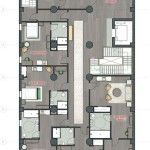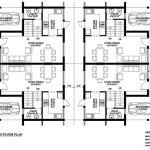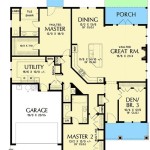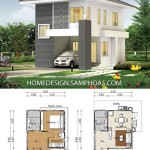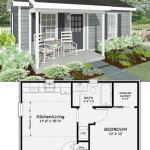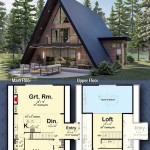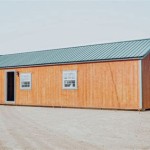Plans For Building A Bluebird Box
Bluebirds, recognized for their vibrant plumage and melodious songs, are a welcome addition to any backyard. These cavity-nesting birds often struggle to find suitable nesting sites due to habitat loss and competition with non-native species. Providing a well-constructed bluebird box can significantly aid in their conservation efforts by creating safe and secure nesting locations. Constructing a bluebird box is a relatively simple project that can offer substantial benefits to local bluebird populations. This article outlines crucial aspects of planning and constructing a bluebird box that adheres to best practices for attracting and protecting these beautiful birds.
Choosing the Right Location
Selecting the optimal location for the bluebird box is paramount for its success. Bluebirds prefer open areas with scattered trees or shrubs. Ideal locations include fields, meadows, large lawns, and even along fence lines. Avoid heavily wooded areas, as these environments tend to favor other cavity-nesting species that may compete with bluebirds for nesting sites. The location should be relatively quiet and free from excessive human disturbance. Proximity to potential predators such as feral cats should be carefully considered. A location that offers a clear flight path to and from the box is also essential.
Mounting height is another critical factor. Bluebird boxes are typically mounted between 4 and 6 feet above the ground. This height provides sufficient security from ground predators while remaining accessible for monitoring and cleaning. Consider using a mounting pole rather than attaching the box directly to a tree, as tree-mounted boxes are more vulnerable to climbing predators. The pole should be sturdy and resistant to bending or breaking, especially in areas prone to strong winds. Furthermore, ensure the pole is equipped with a predator guard to prevent access by cats, raccoons, and snakes. A cone-shaped or stovepipe baffle installed below the box can effectively deter these predators.
Orientation of the entrance hole also influences occupancy. Generally, facing the entrance hole away from prevailing winds and towards open areas is recommended. In warmer climates, facing the entrance hole towards the east or northeast can provide shade during the hottest part of the day. In cooler climates, a south or southeast orientation can offer some protection from harsh winter winds. However, local environmental conditions should always be the primary consideration when determining the optimal orientation.
Spacing between multiple bluebird boxes is also important, particularly if the goal is to establish a bluebird trail. Bluebirds are territorial, and nesting boxes should be placed at least 100 yards apart to minimize competition. This spacing allows each pair to establish and defend their nesting territory effectively. For eastern bluebirds, a distance of 300 to 400 feet is often suggested. Monitor the boxes regularly to observe bluebird behavior and adjust spacing as needed if excessive competition is observed.
Design Considerations for the Bluebird Box
The design of the bluebird box significantly impacts its attractiveness to bluebirds and its effectiveness in protecting nesting birds. Use untreated, unpainted wood, ideally cedar or redwood, as these materials are naturally weather-resistant and durable. Avoid using pressure-treated wood, as the chemicals used in the treatment process can be harmful to bluebirds. The thickness of the wood should be at least ¾ inch to provide adequate insulation from temperature extremes.
The dimensions of the box are crucial. A typical bluebird box should measure approximately 5 inches by 5 inches by 8 inches in depth. The entrance hole diameter is particularly important. A 1.5-inch diameter hole is ideal for Eastern Bluebirds, as it allows them to enter while deterring larger birds, such as starlings. The entrance hole should be located approximately 6 inches above the floor of the box. This height prevents predators from reaching into the box to access eggs or nestlings. Adding a predator guard around the entrance hole, such as a metal or plastic ring, can further protect against widening of the hole by squirrels or other animals.
Proper ventilation and drainage are essential for maintaining a healthy nesting environment. Drill four ¼-inch diameter ventilation holes near the top of the box on either side. These holes allow for air circulation, reducing humidity and preventing overheating. Drill four ¼-inch diameter drainage holes in the floor of the box to prevent water from accumulating. This drainage is particularly important in areas with heavy rainfall. The roof of the box should overhang the sides by at least 2 inches to protect the entrance hole from rain and snow. A hinged roof allows for easy monitoring and cleaning of the box. Secure the roof with screws or latches to prevent it from being blown open by strong winds.
The interior of the box should not be smooth. Bluebirds cannot easily grip smooth surfaces, making it difficult for them to exit the box. Roughen the interior walls of the box by scoring them with a saw blade or chisel. This scoring provides the birds with a better grip and facilitates their exit. Avoid adding perches to the outside of the box, as these perches can assist predators in accessing the box. Bluebirds do not need perches to enter the box; they can easily fly directly to the entrance hole.
Construction and Assembly Techniques
Accurate cutting and assembly are critical for creating a durable and functional bluebird box. Start by creating a detailed cutting plan based on the chosen design. Ensure that all measurements are accurate to prevent gaps or misalignments. Use a saw to cut the wood pieces according to the plan. Sand the edges of each piece to remove splinters and create a smooth surface. This reduces the risk of injury to the birds and improves the overall appearance of the box. Exercise caution when cutting and sanding to avoid personal injury.
Assemble the box using exterior-grade screws or nails. Screws are generally preferred, as they provide a stronger and more durable connection. Pre-drill pilot holes to prevent the wood from splitting when driving in the screws. Ensure that all screws are countersunk to prevent them from protruding and potentially injuring the birds. Align the pieces carefully before fastening them together to ensure that the box is square and sturdy.
When attaching the roof, ensure that it fits snugly and provides adequate overhang on all sides. The hinge mechanism should be robust and allow the roof to be easily opened and closed. Use stainless steel hinges to prevent rusting. Secure the roof with screws or latches that are easy to operate but secure enough to prevent accidental opening. Consider adding a small latch to the front of the roof to provide extra security.
After assembling the box, inspect it carefully for any sharp edges, protruding nails, or other potential hazards. Remove any imperfections to ensure that the box is safe for the birds. Apply a sealant to the seams of the box if desired, but avoid using toxic chemicals. A water-based sealant is generally the safest option. The completed bluebird box should be a sturdy, weather-resistant structure that provides a safe and comfortable nesting environment for bluebirds.
Installing the bluebird box properly is the final step in the construction process. Use a sturdy mounting pole and ensure that it is securely anchored in the ground. Use appropriate hardware to attach the box to the pole. Consider adding a predator guard to the pole to protect the box from unwanted visitors. Regularly monitor the bluebird box to check for occupancy and to clean it out after each nesting season. With proper planning, construction, and installation, a bluebird box can provide a valuable nesting site for these cherished birds and contribute to their conservation.

Bluebird Nest Box Plans Easy Diy Project

Blue Bird House Plans Free Diy Kits

How To Make A Diy Bluebird House Birds And Blooms

Eastern Bluebird Birdhouse 70birds Plans Index

Bluebird Birdhouse Plans Complete Step By Instructions For Building A Bird House

Bluebird Bird House Plans Free Kits

Western And Mountain Bluebird Birdhouse 70birds Plans Index

Bluebird Nest Box Plans To Build From Scraps

Building Plans For Homebound Bird Enthusiasts Arkansas Game Fish Commission

Birdhouse And Nest Box Plans For Several Bird Species The Birders Report
Related Posts

